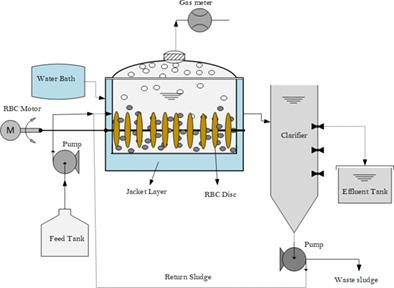当前位置:
X-MOL 学术
›
Int. J. Energy Res.
›
论文详情
Our official English website, www.x-mol.net, welcomes your feedback! (Note: you will need to create a separate account there.)
Developing single-substrate steady-state model for biohydrogen production in continuous anaerobic activated sludge–rotating biological contactor system: Novel insights on the process
International Journal of Energy Research ( IF 4.6 ) Pub Date : 2021-09-14 , DOI: 10.1002/er.7265 Mahin Mohammadi 1 , Parviz Mohammadi 1
International Journal of Energy Research ( IF 4.6 ) Pub Date : 2021-09-14 , DOI: 10.1002/er.7265 Mahin Mohammadi 1 , Parviz Mohammadi 1
Affiliation

|
Kinetic-modeling studies are a key step to attain economically practical technology in terms of efficient scheme and bioreactor scale-up to describe the substrate utilization, biomass growth, and product formation in the biohydrogen production process. Kinetic-modeling study of biohydrogen production from molasses using mixed culture was investigated in an anaerobic activated sludge-rotating biological contactor. Single-substrate with endogenous metabolism and Luedeking–Piret model was used to describe the kinetic parameters at different dilution rate (0.032-0.167 h−1) with influent concentration of 6, 15, and 24 g COD/L. The maximum experimentally estimated value of μmax, kS, and Yx/s was found to be 0.053 h−1, 9.98 g/L, and 0.11 g/g in dilution 0.167 h−1, respectively. It can be concluded that increase in dilution rate is a suitable for microbial activities in the biological hydrogen production process. Accordingly, maximum specific growth rate and hydrogen production rate will be increased. Contrariwise, decrease in dilution rate is associated with lower biomass concentration and higher endogenous metabolism. Therefore, dilution rate is an important parameter in production of biohydrogen in this bioreactor and should be kept in an appropriate range.
中文翻译:

在连续厌氧活性污泥-旋转生物接触器系统中开发生物制氢的单基质稳态模型:对该过程的新见解
动力学建模研究是在有效方案和生物反应器放大方面获得经济实用技术的关键步骤,以描述生物氢生产过程中的底物利用、生物质生长和产物形成。在厌氧活性污泥旋转生物接触器中研究了使用混合培养从糖蜜生产生物氢的动力学模型研究。采用内源性代谢单底物和 Luedeking-Piret 模型来描述进水浓度为 6、15 和 24 g COD/L的不同稀释率 (0.032-0.167 h -1 ) 下的动力学参数。μ max、k S和 Yx/s的最大实验估计值为0.053 h -1、9.98 g/L 和 0.11 g/g 稀释 0.167 h -1分别。可以得出结论,在生物制氢过程中,稀释率的增加是适合微生物活动的。因此,最大比生长速率和氢产率将增加。相反,稀释率的降低与较低的生物量浓度和较高的内源代谢有关。因此,稀释率是该生物反应器生产生物氢的重要参数,应保持在适当的范围内。
更新日期:2021-09-14
中文翻译:

在连续厌氧活性污泥-旋转生物接触器系统中开发生物制氢的单基质稳态模型:对该过程的新见解
动力学建模研究是在有效方案和生物反应器放大方面获得经济实用技术的关键步骤,以描述生物氢生产过程中的底物利用、生物质生长和产物形成。在厌氧活性污泥旋转生物接触器中研究了使用混合培养从糖蜜生产生物氢的动力学模型研究。采用内源性代谢单底物和 Luedeking-Piret 模型来描述进水浓度为 6、15 和 24 g COD/L的不同稀释率 (0.032-0.167 h -1 ) 下的动力学参数。μ max、k S和 Yx/s的最大实验估计值为0.053 h -1、9.98 g/L 和 0.11 g/g 稀释 0.167 h -1分别。可以得出结论,在生物制氢过程中,稀释率的增加是适合微生物活动的。因此,最大比生长速率和氢产率将增加。相反,稀释率的降低与较低的生物量浓度和较高的内源代谢有关。因此,稀释率是该生物反应器生产生物氢的重要参数,应保持在适当的范围内。



























 京公网安备 11010802027423号
京公网安备 11010802027423号